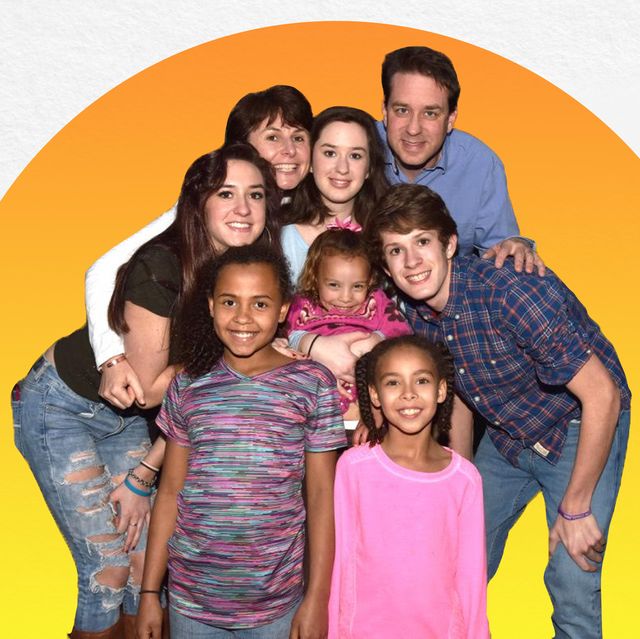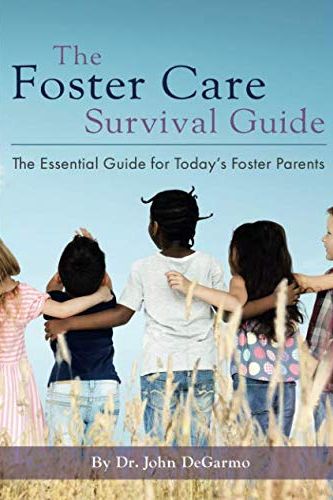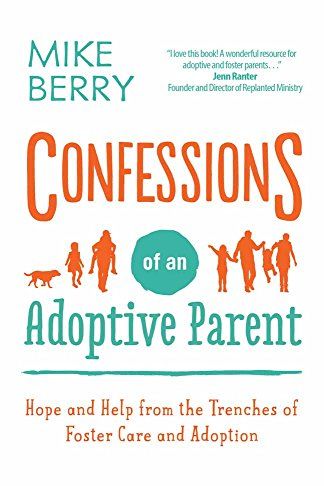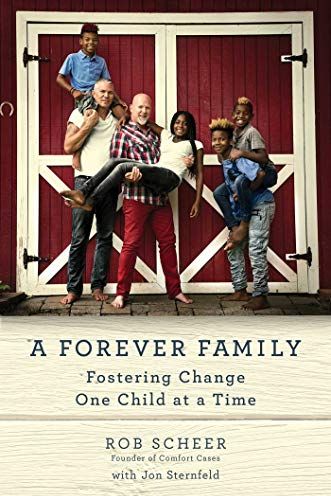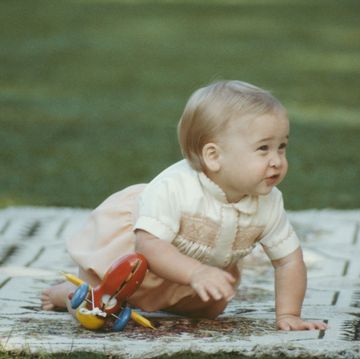Foster care is a system of caregiving for children who cannot safely live with their biological parents. It's intended to be temporary, although under certain circumstances, some children can remain indefinitely. While there are many reasons children might require temporary caregivers, significant drivers of the need for foster care today are drug abuse — especially methamphetamine and opiods — and neglect. Often, because of movies or the media, foster care is misunderstood, and can be confused with or considered a baby step towards adoption. But foster care is its own selfless act, and if you're considering it for your family, here's what you need to know.
Why are kids placed in foster care to begin with?
In the United States, foster care is overseen by state child welfare agencies. Children enter the system when someone, whether a private individual or a mandated reporter like a teacher or a doctor, makes a hotline call reporting possible abuse or neglect, says Annette Semanchin Jones, Ph.D., assistant professor at the University of Buffalo School of Social Work. The agency involved might be state- or county-run. That phone call would prompt an investigation.
Most of the time, after a report is made, the children are allowed to stay with their parents. “A family may come into contact with the system, and they might work with the child welfare agency, for some time, without their children being removed," she says. "There are many, many, many cases where a child would remain in the home, or may be just temporarily placed with a relative, or back with parents pretty quickly.” But if there are imminent safety risks, emergencies, or problems resolving ongoing situations, a child may be placed in foster care.
Foster parents become legal caregivers to someone else’s biological children.
They stand in for the biological parents and are responsible for handling daily routines, schooling, food, healthcare, therapy, religious practice, and all the little things that go into raising a child.
Foster parents also serve as key advocates for the children in their homes, navigating legal, educational, and medical challenges. In some states, foster parents have also begun to assume something of a teaching role for biological parents. “Some jurisdictions really have a model where they promote kind of more of a partnership, foster parents providing support for the biological parents as well,” Dr. Semanchin Jones says. “At the very least [foster families should] not be placing any barriers in the way for the child, including emotional barriers.” That's because permanent placement with the foster family is not actually the most desired outcome for a foster kid.
Reunification, or return to biological parents, is the primary goal of foster care.
Foster care is intended to provide children a safe place to live until they can return to their families of origin — or alternative permanent arrangements can be made. States practice concurrent planning, which means that if a child cannot safely be reunited, some foster parents may eventually be granted the opportunity to adopt children in their care. The process usually takes years.
John DeGarmo, Ed.D., author of The Foster Care Survival Guide, runs The Foster Care Institute. Out of more than 60 children fostered in his home to date, Dr. DeGarmo notes, his family has adopted three. “The termination of [birth] parental rights did not happen very often,” he says.
There are nearly 450,000 children in foster care nationwide. About one-third of those children live with relatives, and about half with non-related foster families. At last count, more than half of the children in care (56 percent) still had family reunification as the primary resolution plan. Forty-nine percent of the kids who exited foster care went home, and 43 percent were in care less than one year.
Dr. Semanchin Jones adds that cases can also receive permanent resolution through legal guardianship, where the foster family stays on as primary caregivers, but the birth parents maintain their parental rights. "It takes away that requirement that you have to have a termination of parental rights in order to have permanency,” she says.
The decision to foster a child should be made by the entire family.
Not every home is appropriate for fostering. “If you're married, or if you have a partner, I think you have to discuss it with them first, because you both of you have to be on board,” Dr. DeGarmo says. “If one person in a relationship wants to be a foster parent, and the other one does not want to be a foster parent, or is on the fence, then you really can't do it, because it's a full time-commitment.”
Fostering puts new stresses on the entire family, in part because the children themselves have been separated from everything that is normal to them. Children in foster care, Dr. DeGarmo emphasizes, do not want to be there, and foster parents will be expected to address fallout from anxiety, trauma, neglect, and abuse. “Sometimes the needs of the child can be overwhelming, and so sometimes your relationship suffers as a result,” he says.
Dr. Semanchin Jones adds that children are a also vital part of the family dynamic and should not be left out of the discussion. To prepare themselves emotionally, she says, foster parents need to recognize that their role in the child’s life may not be a lasting one.
“Foster parents are doing this job, but they're also providing a loving and caring home for a child," she says. "Oftentimes, that is temporary.” Families need to go in “knowing that you may be providing care and nurturing and connection, like a very real connection, to children on a temporary basis.”
If you decide it's right for you, you have to be licensed by your local agency.
Foster parents undergo an extensive licensing process that may include background checks, fingerprints, home inspections, personal references, and training classes.
Dr. Semanchin Jones recommends interested families start by going to their individual state website for child and family services to get a brief overview of the requirements. “Across every state, though, there would be some regulations,” she says. “There would be a caseworker, or a social worker, that would be in charge of licensing a foster home.”
It’s difficult to generalize, because states have so much leeway to make their own demands, but foster parents can expect to do a home study, in which their home would be inspected to make sure it meets local standards. “Is your home in generally good condition? Will the child have their own space?” Dr. Semanchin Jones says.
Training programs are a large component of the process, too, she notes. Foster parents are dealing with traumatized children, and therefore must complete hours of coursework to prepare them for the realities of parenting children in care.
Do foster parents have any rights?
Foster parents have the right to decide who can stay in their homes and how much caregiving they will do. “Some foster parents might just do infants, while others might do sibling groups,” Dr. DeGarmo says. “Some foster parents might just take teenagers, or maybe just girls or just boys. Foster parents have the opportunity to choose who they have placed in their home; they do not have to accept every placement that comes their way.”
Depending on location, foster caregivers may or may not have authority to make specific decisions that affect the child, such as cutting hair or otherwise altering the child’s appearance. Federal laws set standards aimed at helping foster children maintain a sense of normalcy. Among other things, these laws support foster parents’ ability to include foster kids in family events, extracurricular activities, and short-term travel. Individual states may also spell out their own bills of rights for foster parents or foster children.
Because the primary aim of foster care is to support reunification with biological parents, foster parents typically do not have much power over case outcomes. They may be permitted to participate in the process by giving feedback and documents to caseworkers, review committees, court-appointed special advocates (CASAs) and guardians ad litem; sending letters; or attending court dates.
Tip: Amazon offers a discount on a two-year Prime membership for foster families whose children have a valid EBT or Medicaid card. Find out more here.
Do foster parents get paid? How much?
It depends. Payments to foster families vary depending on the level of care-taking required. Relatives who have not completed the same level of licensing as other foster parents may not be paid at all.
Specific jurisdictions may help foster families deal with other expenses, such as childcare, Dr. Semanchin Jones says. Because the state is legally responsible for their wellbeing, foster children can also qualify for state and federal benefits such as medical coverage and school lunch assistance.
When a foster family does receive financial support, the amount often doesn't cover all of the costs associated with caring for that child, Dr. DeGarmo notes. “That's one of the misconceptions, is that the foster parents are getting paid a lot of money,” he says. The funds foster families receive for caregiving, however, are non-taxable.
“Many states are raising the daily premiums for foster parents,” Dr. DeGarmo adds. “But I have found the vast majority of us parents are like myself. We pay out of our own pocket, so to speak, to help these children live a very, very normal lifestyle, given every single opportunity.”
